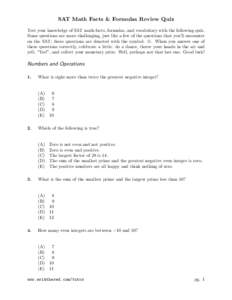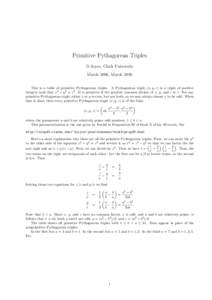<--- Back to Details
| First Page | Document Content | |
|---|---|---|
 Date: 2011-02-27 19:43:13Triangles Equations Area Expected value Elementary algebra Polynomials Formulas for generating Pythagorean triples Classical orthogonal polynomials Mathematics Geometry Mathematical analysis |
Add to Reading List |
 facts-and-formulas-quiz.dvi
facts-and-formulas-quiz.dvi

![USA Mathematical Talent Search Round 3 Solutions Year 24 — Academic Year 2012–2013 www.usamts.org[removed]In the 8 × 8 grid shown, fill in 12 of the grid cells with the USA Mathematical Talent Search Round 3 Solutions Year 24 — Academic Year 2012–2013 www.usamts.org[removed]In the 8 × 8 grid shown, fill in 12 of the grid cells with the](https://www.pdfsearch.io/img/e726e6f818aa486c0355ce09d19f2f33.jpg)
![37th Canadian Mathematical Olympiad Wednesday, March 30, [removed]Consider an equilateral triangle of side length n, which is divided into unit triangles, as shown. Let f (n) be the number of paths from the triangle in th 37th Canadian Mathematical Olympiad Wednesday, March 30, [removed]Consider an equilateral triangle of side length n, which is divided into unit triangles, as shown. Let f (n) be the number of paths from the triangle in th](https://www.pdfsearch.io/img/46e938e546c7a61d52477a7c59d977b2.jpg)